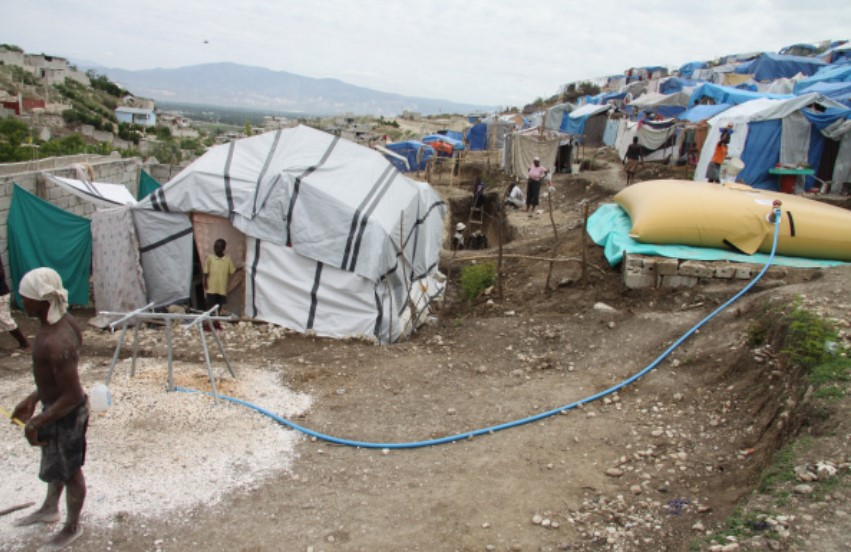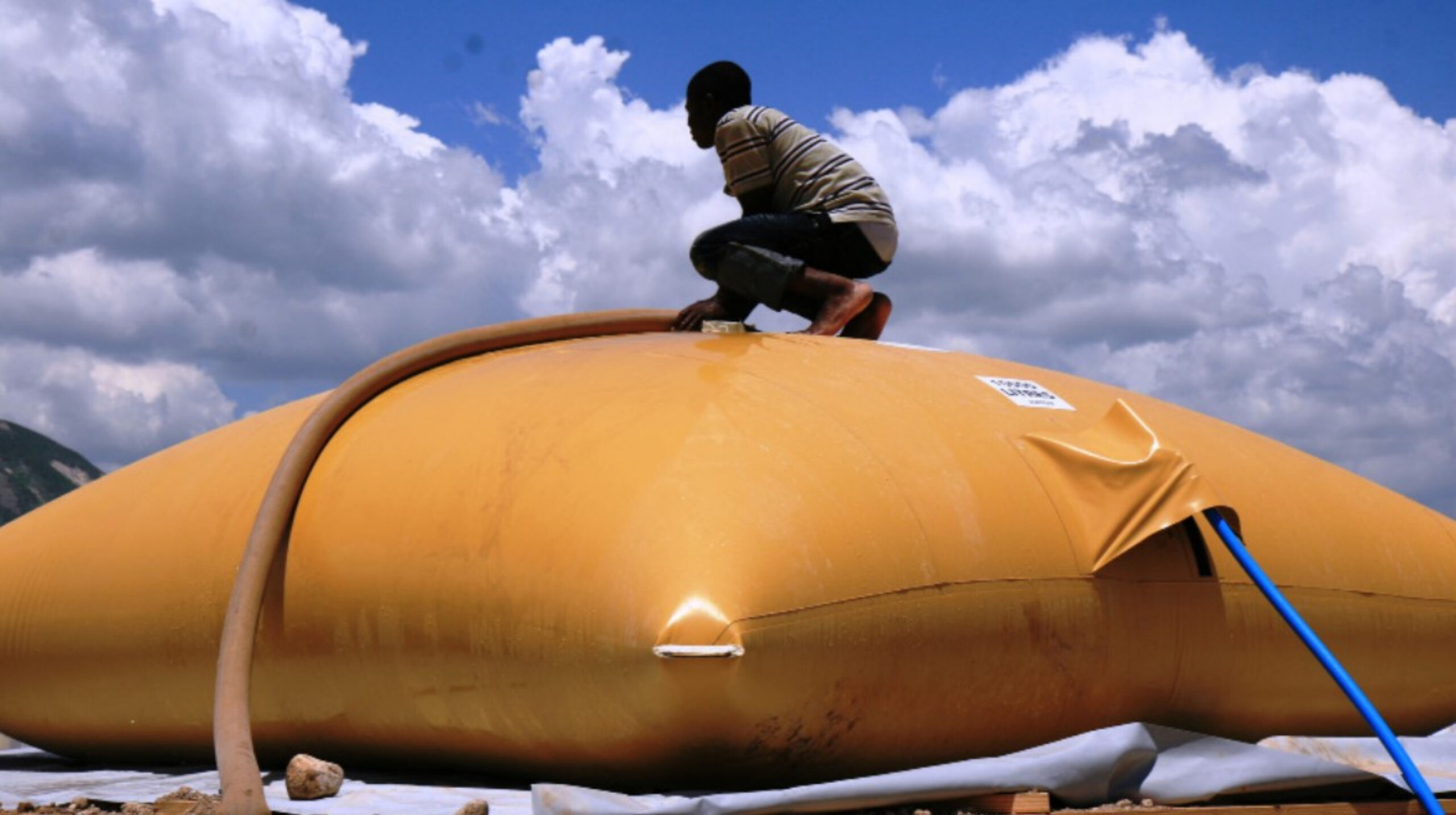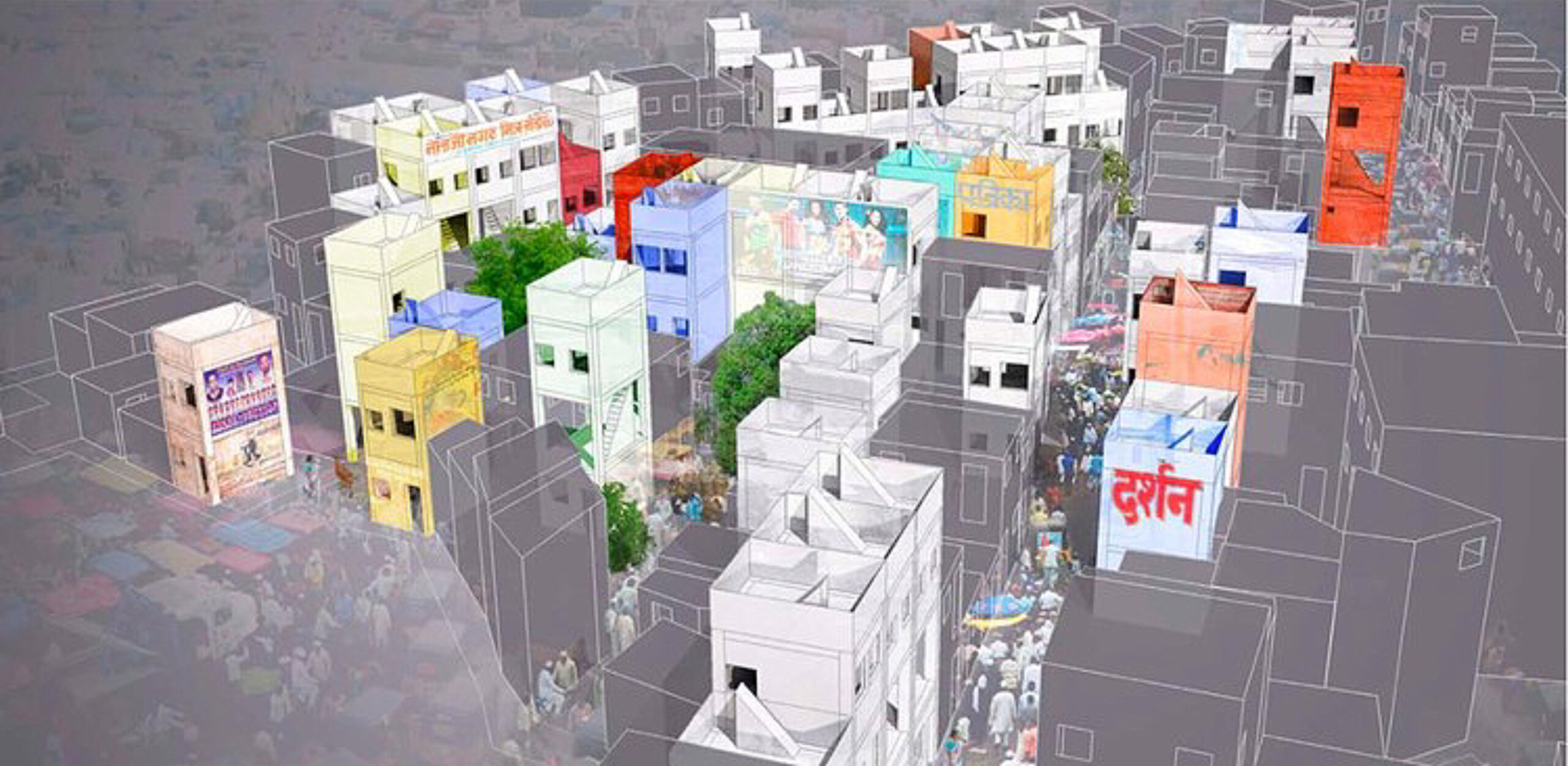| Project Name | Water Bladder |
| Location | Various |
| Date | 1990-present |
| Designer | Structure-Flex |
| Manufacturer | Structure-Flex |
| End User | 60-3300 people per day at minimum SPHERE standards of 15 liters per person per day |
| Capacity | 1000-50 000 liters |
| Featured Agency | Oxfam |

Children gathering water from the water bladder tap system. Photo: Kenny Rae/Oxfam
Water bladders are an efficient, life-saving method of distributing and storing potable water in emergency situations. Produced by Structure-Flex and distributed by Oxfam, an international aid agency, the bladders first arrived in Haiti after the devastating earthquake that struck near the capital of Port-au-Prince in January 2010. Oxfam has been using the water bladders for over 20 years. Resembling huge yellow pillows, they are in high demand in Haitian communities. In the wake of the 7.0-magnitude earthquake, half a million people are dependent on such systems for water.

Water bladder is connected to a clean water faucet unit. Photo: Kenny Rae/Oxfam
Oxfam implemented the water bladders in Delmas 48, a refugee camp located in Port-au-Prince that is situated on what used to be a golf course. Shortly after the earthquake it became a makeshift home to an estimated 50 000 people per night. The demand for water was so high that Oxfam had to implement five water bladders as well as semi-permanent storage tanks.
The bladder has a filler cap and tap, and is made of polyester coated with a UV-resistant food-grade PVC. These materials can last for years, and the only maintenance necessary is patching the bladder should it spring a leak. Though the design may be simple, water bladders have the potential to save millions of lives through their deployment. They are easy to ship and set up with the help of community members. It takes just one Oxfam worker to install a tap stand, which functions as a faucet. Oxfam strives to provide camps with the Sphere Humanitarian Charter and Minimum Standards in Disaster Response of 15 liters of water per person per day. Under the sphere standard, a 10 000-liter bladder can provide water for 700 people a day.
Kenny Rae helped set up Oxfam’s water sanitation program in Port-au-Prince. “People always emphasized to us that water is the most important necessity. It was 95 °F and people hadn’t had clean water for days, and then we suddenly arrived,” Rae recalls. “We not only provided clean drinking water, but set up separate men’s and women’s areas where they could bathe. They were so thankful.”

Men filling up an empty water bladder. Photo: Jane Beesley/Oxfam
The main drawback is that the tanks have to be shipped from the United Kingdom, which is a costly delay during an emergency. They are also dependent on water delivery from trucks, which can be interrupted by fuel shortages, traffic or washed-out roads. Haitian water truck drivers are doing the best they can to serve their communities and keep the bladders full.

A boy helps fill a water bladder in Haiti. Photo: Jane Beesley/Oxfam
















READ OR LEAVE A COMMENT